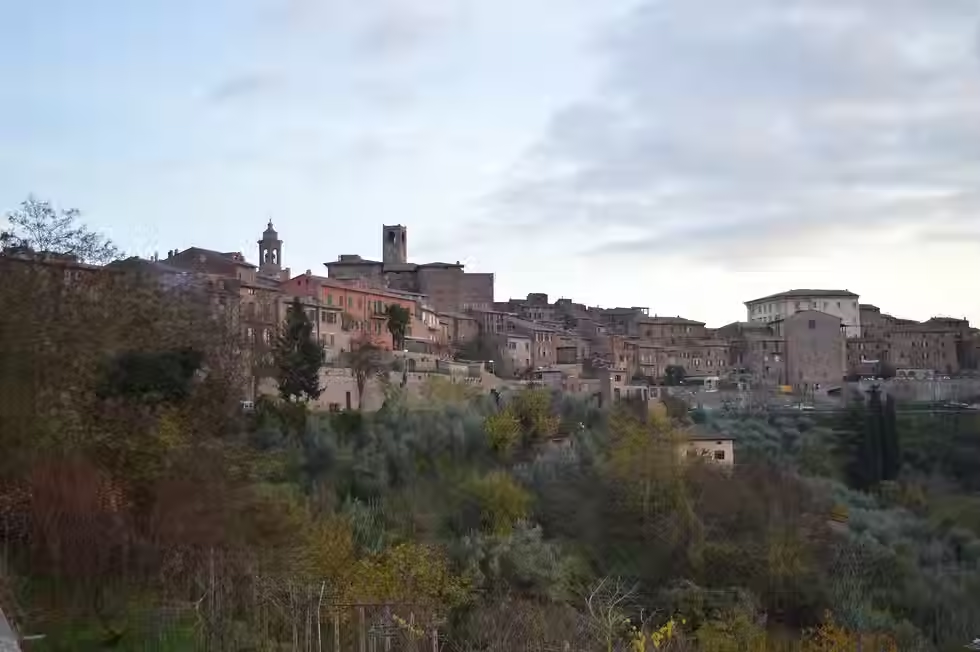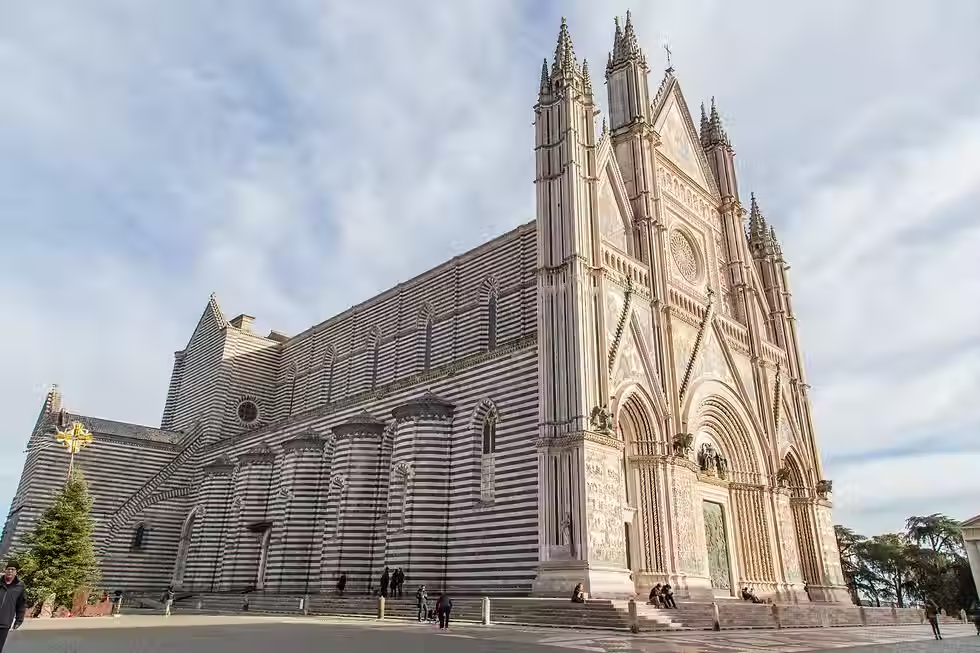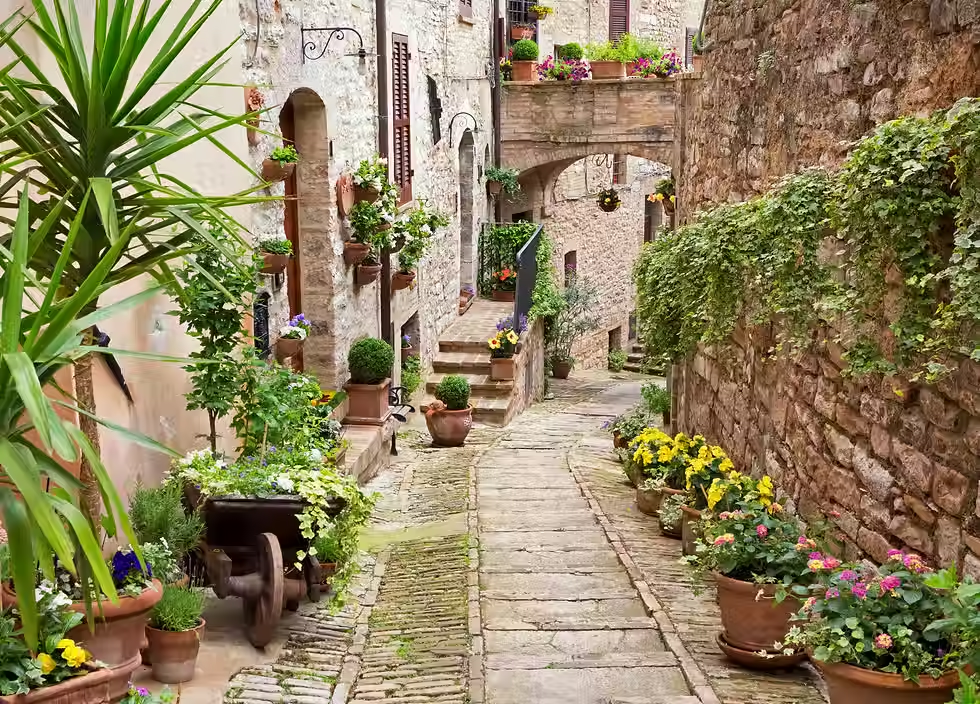Step Into the Past: Exploring the Medieval Villages of Umbria
- Alessandro Loja
- Mar 13
- 3 min read
Updated: Apr 14
Rolling hills, stone-built villages, and a sense of history that lingers in the air—Umbria is often overshadowed by its more famous neighbor, Tuscany, but for those who venture into its heart, the reward is something truly special. Whether you're coming from Germany or the UK, this is a land of slow travel, where every cobbled alleyway tells a story, and every hilltop offers a breathtaking view.
If you're looking for an Italian getaway that blends culture, nature, and incredible food, then Umbria’s medieval villages (Borghi) are the perfect escape. Here’s where to go and what to expect.

There’s something about Umbria’s villages that makes time feel slower. Perhaps it’s the medieval towers rising over olive groves or that locals still shop at tiny family-run bakeries where recipes haven’t changed in centuries. Unlike busier Italian destinations, Umbria remains refreshingly untouched by mass tourism, allowing you to experience Italy as it was meant to be—authentic, welcoming, and packed with history.
The Best Medieval Villages to Visit in Umbria
Città della Pieve: A Renaissance Jewel

Just a short drive from Fabro, Città della Pieve is a picture-perfect town famous for its rich red-brick buildings and connection to Perugino, one of the great Renaissance painters. Strolling through its winding alleys, you'll discover hidden courtyards, cozy trattorias, and centuries-old churches adorned with stunning frescoes.
Where to stay: If you’re looking for a peaceful retreat nearby, Casale Serena in Fabro offers a beautiful countryside setting with easy access to Città della Pieve and beyond. It’s the perfect place to unwind after a day of exploring.
Montefalco: The Balcony of Umbria
Montefalco earns its nickname thanks to the sweeping views over vineyards and valleys that stretch as far as the eye can see. This village is also the heart of the Sagrantino wine region, making it a must-visit for wine lovers. Pop into one of the local wineries for a tasting, or enjoy a slow lunch at a family-run osteria, where dishes like strangozzi al tartufo (handmade pasta with truffle) showcase the best of Umbrian flavors.
Orvieto: A Hilltop Masterpiece
Orvieto rises dramatically on a volcanic plateau, its magnificent cathedral visible from miles away. The Duomo di Orvieto is one of Italy’s most impressive Gothic churches, with a golden façade that shimmers in the sunlight. Beneath the city, a labyrinth of tunnels and caves tells the story of its Etruscan past. Take a guided tour of the underground city, then sip a glass of Orvieto Classico, the crisp white wine that has been produced here for centuries.

Spello: The Village of Flowers
Spello is famous for its colorful floral displays, which transform the village into an open-air garden, especially during the Infiorata festival when locals create intricate carpets of flower petals along the streets. Beyond its beauty, Spello also has an incredible food scene, with small restaurants serving Umbrian specialties like porchetta (roast pork with herbs) and local olive oils that rival those of Tuscany.

Bevagna: A Step Back in Time

If you’ve ever wondered what life was like in a medieval market town, Bevagna is the place to find out. Unlike many hilltop villages, Bevagna sits in the valley, making it easy to explore on foot. Its well-preserved Roman remains, including an ancient theater and baths, add another layer of history to its medieval streets. Visit in June to experience the Mercato delle Gaite, a festival where the town recreates life as it was in the Middle Ages, complete with traditional crafts and costumed locals.
Planning Your Trip to Umbria
Best time to visit: Spring and autumn are ideal, with mild weather and local festivals in full swing. Summer is warmer but offers long evenings perfect for al fresco dining.
Getting there: The closest airports are in Perugia, Rome, and Florence. Renting a car is highly recommended to explore the villages at your own pace.
How long to stay: A week gives you enough time to visit multiple villages, enjoy the countryside, and experience Umbrian cuisine at a relaxed pace.
Umbria’s medieval villages offer something truly special—a glimpse into Italy’s past, an escape from the crowds, and a chance to connect with the land, the food, and the people in a way that feels authentic. Whether you’re sipping wine in Montefalco, wandering through the flower-lined alleys of Spello, or admiring Renaissance masterpieces in Città della Pieve, this is a place that stays with you long after you leave.
If you’re planning a trip, take the time to explore these villages, and consider staying somewhere like Casale Serena for an experience that captures the heart of Umbria.
.png)

